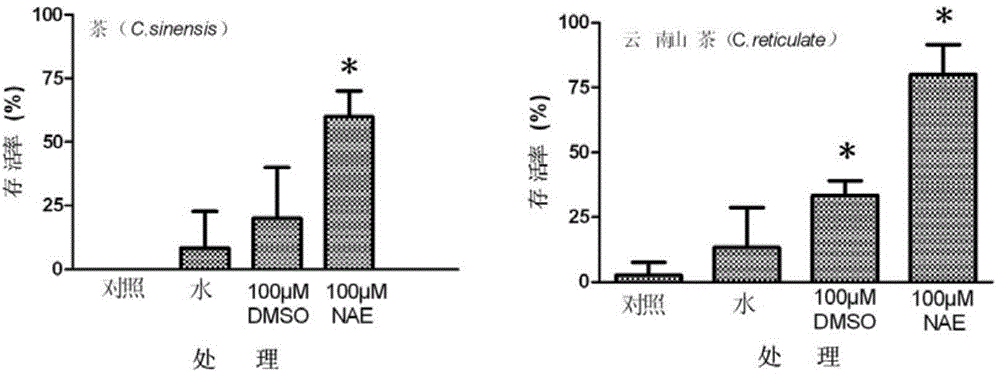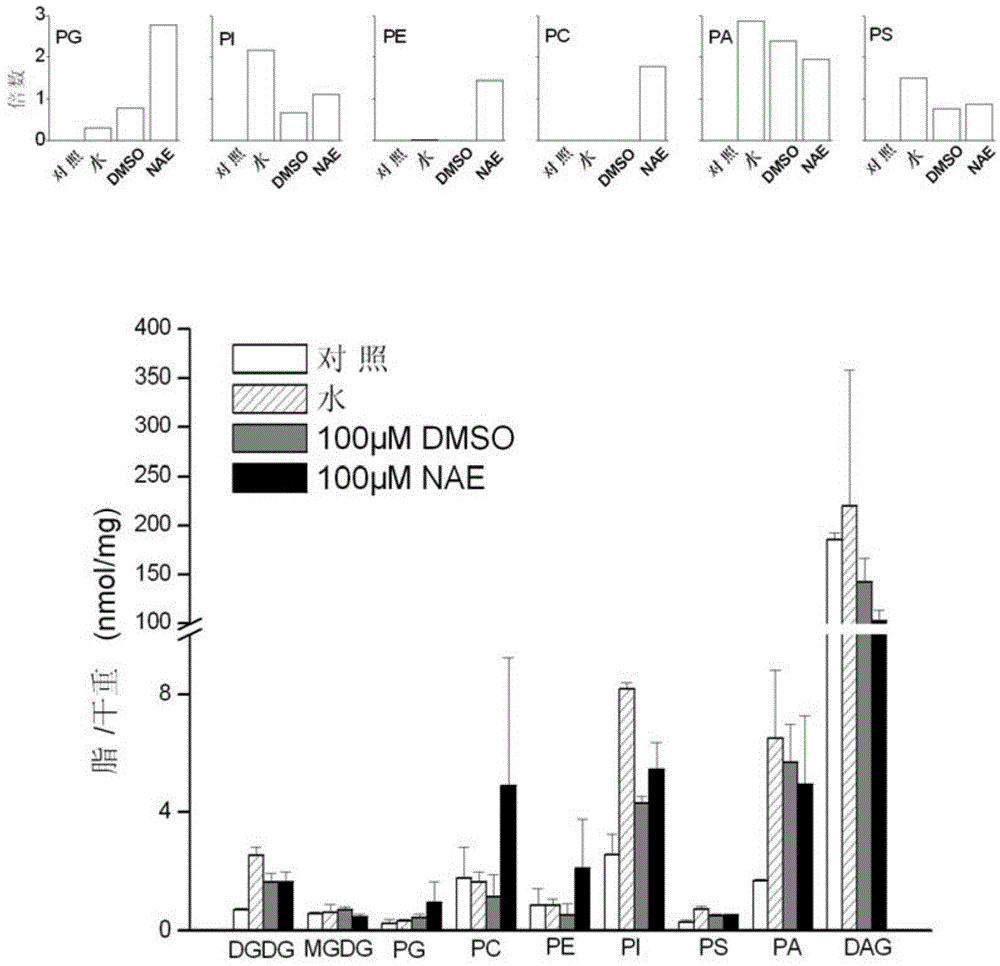Method for improving survival rate of plant seeds by N-acylethanolamines after ultralow-temperature preservation and application of N-acylethanolamines
A technology of acylethanolamine and plant seeds, which is applied in the fields of plant preservation, botanical equipment and methods, and application, can solve unseen problems, and achieve the effect of improving survival rate and good application prospect.
- Summary
- Abstract
- Description
- Claims
- Application Information
AI Technical Summary
Problems solved by technology
Method used
Image
Examples
Embodiment 1
[0025] Exogenous application of 100 μM N-acylethanolamines (N-acylethanolamines, NAE) significantly increased the survival rate and regeneration rate of hypocotyls of Yunnan camellia and Pu'er tea during cryopreservation.
[0026] In this experiment, the hypocotyls of the intermediate seeds of Yunnan camellia (Camillia reticulate) and tea (Camillia sinensis) were taken for pretreatment and cryopreservation experiments, and germination tests were carried out to detect vigor. After peeling the seeds of Yunnan camellia and Puer tea, soak them in 75% alcohol for 1 minute for surface disinfection, and then wash them with clean water. Under aseptic conditions, the hypocotyls of the seeds were taken out, and every 10 hypocotyls was regarded as a repetition, and each treatment had 5 repetitions, and they were placed in the treatment solution of 1ml water, 100μM DMSO and 100μM NAE respectively, and placed in the dark at 25°C. Process for 3 hours. The hypocotyls were taken out and drie...
Embodiment 2
[0028] Exogenous application of 100 μM N-acylethanolamines (N-acylethanolamines, NAE) changed the membrane lipid composition of Yunnan Camellia hypocotyls during cryopreservation, thereby improving the survival rate and regeneration rate of hypocotyls after cryopreservation.
[0029] In this experiment, the hypocotyls of the intermediate seed Yunnan camellia (Camillia reticulate) seeds were selected for pretreatment and cryopreservation experiments, and lipid detection and analysis were carried out. After peeling the seeds of Camellia yunnanensis, soak them in 75% alcohol for 1 minute for surface disinfection, and then wash them with clean water. Under aseptic conditions, the hypocotyls of the seeds were taken out, and every 10 hypocotyls was regarded as a repetition, and each treatment had 5 repetitions, and they were placed in the treatment solution of 1ml water, 100μM DMSO and 100μM NAE respectively, and placed in the dark at 25°C. Process for 3 hours. The hypocotyls were ...
PUM
 Login to View More
Login to View More Abstract
Description
Claims
Application Information
 Login to View More
Login to View More - R&D
- Intellectual Property
- Life Sciences
- Materials
- Tech Scout
- Unparalleled Data Quality
- Higher Quality Content
- 60% Fewer Hallucinations
Browse by: Latest US Patents, China's latest patents, Technical Efficacy Thesaurus, Application Domain, Technology Topic, Popular Technical Reports.
© 2025 PatSnap. All rights reserved.Legal|Privacy policy|Modern Slavery Act Transparency Statement|Sitemap|About US| Contact US: help@patsnap.com


